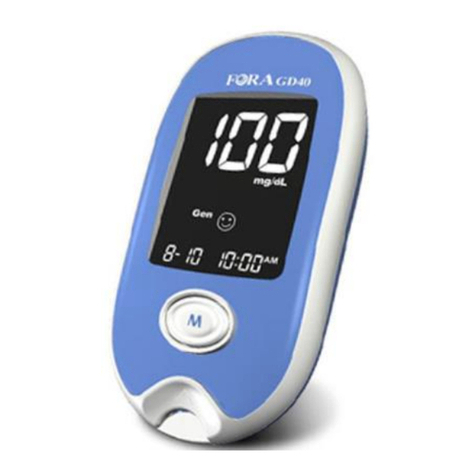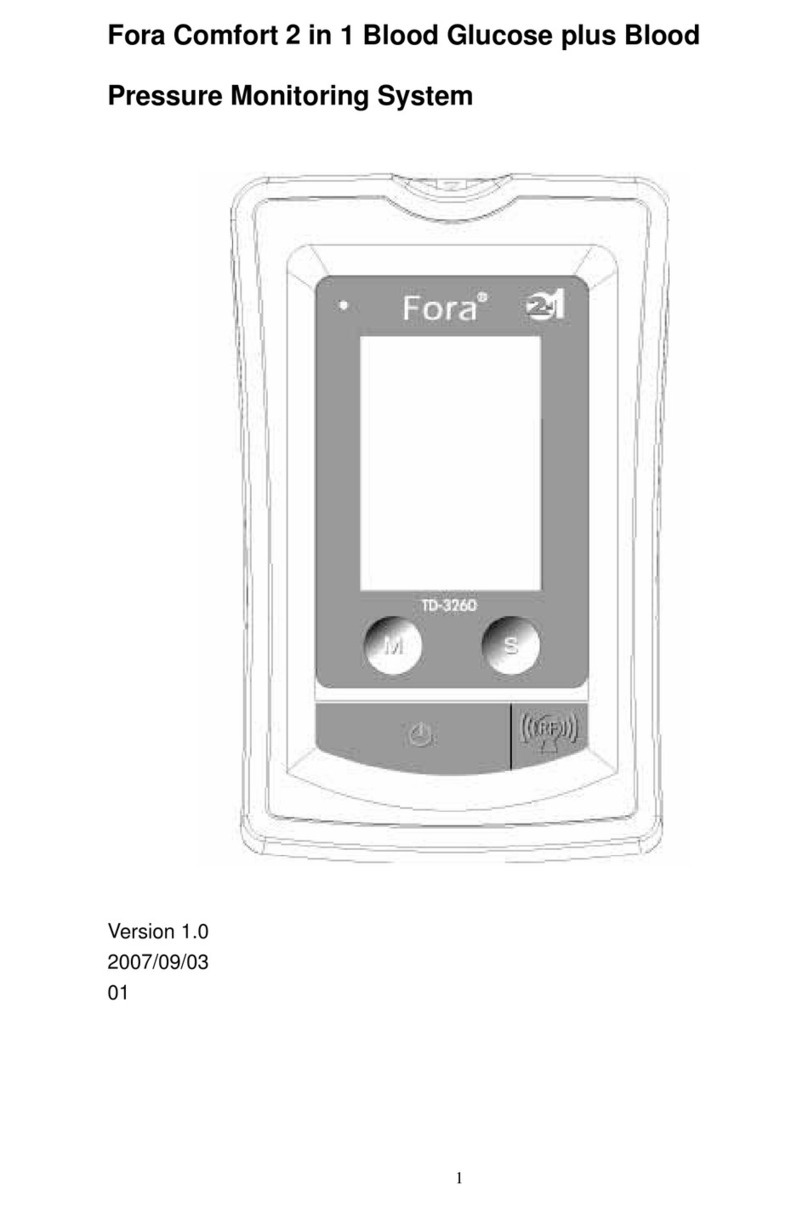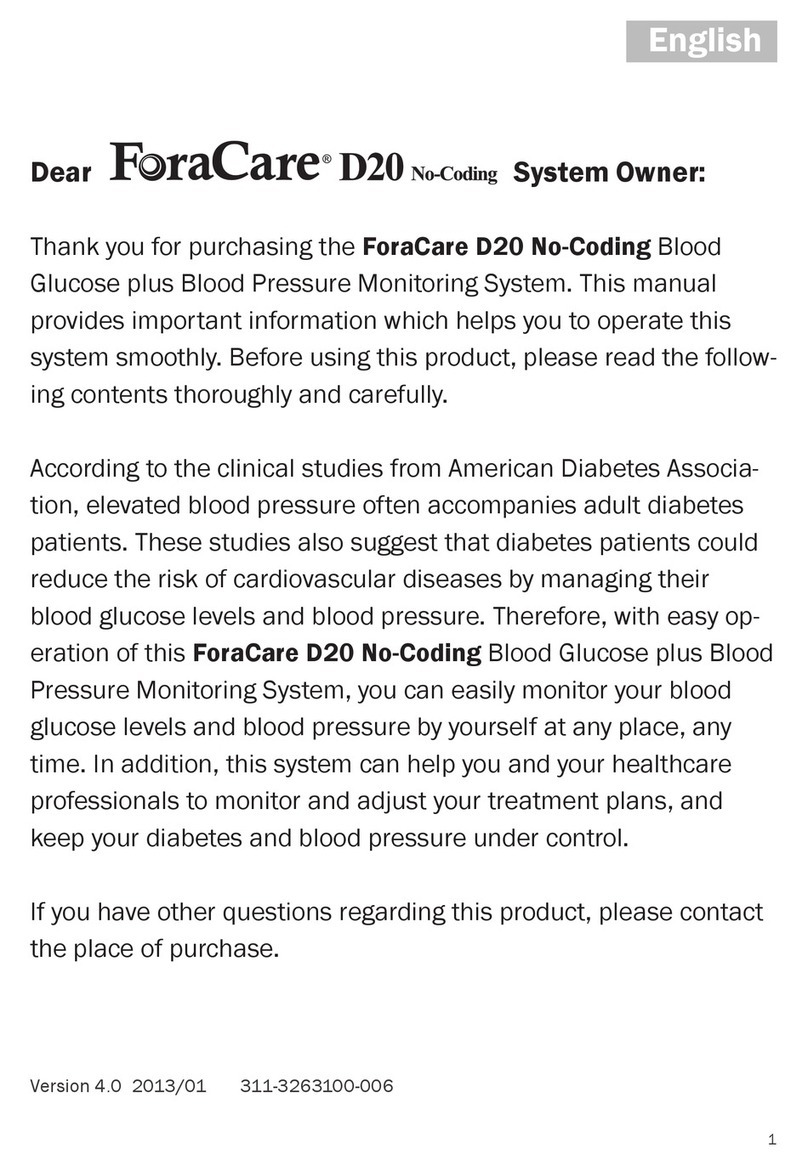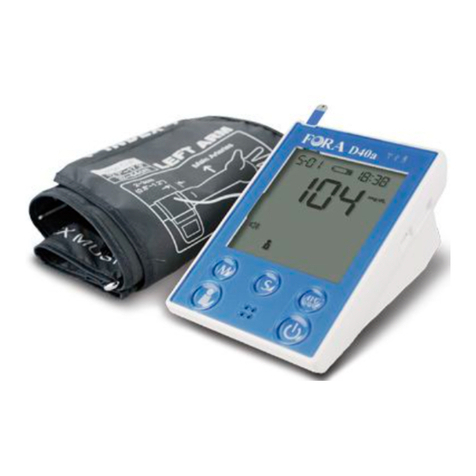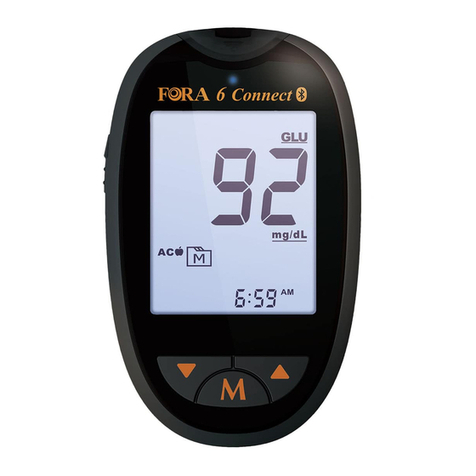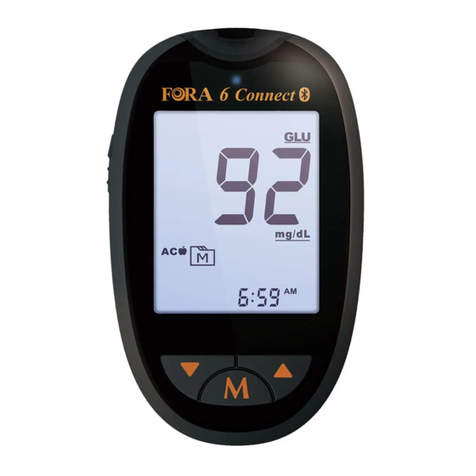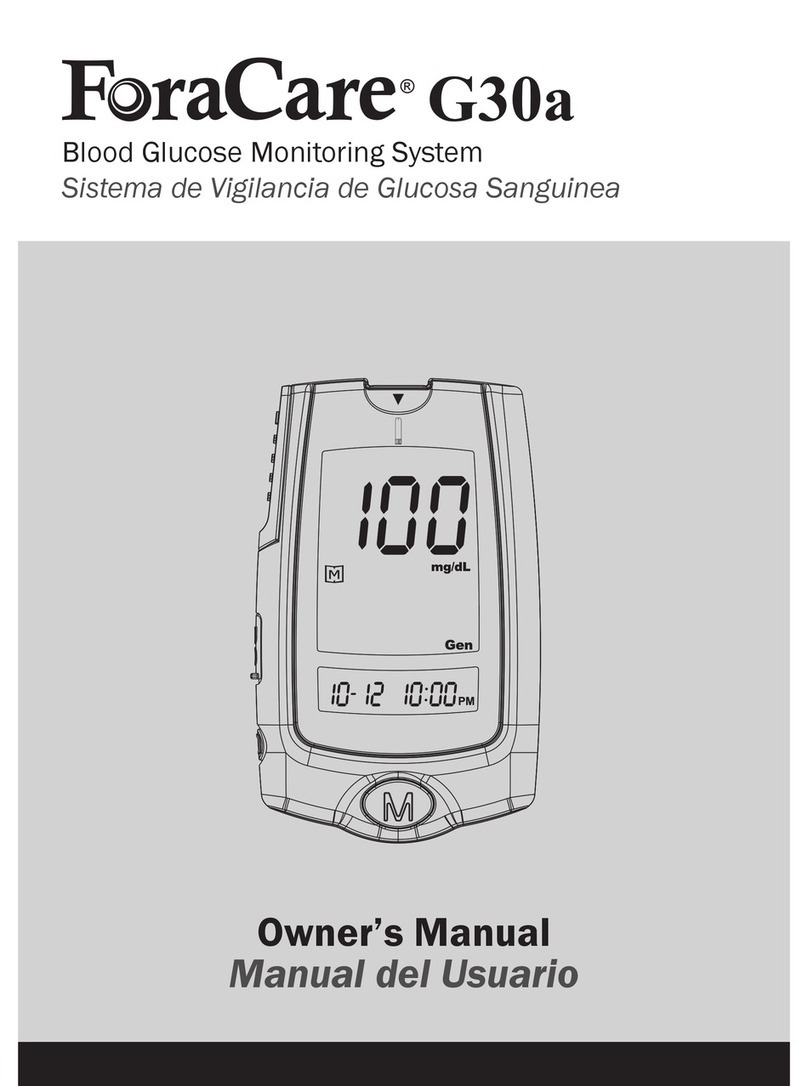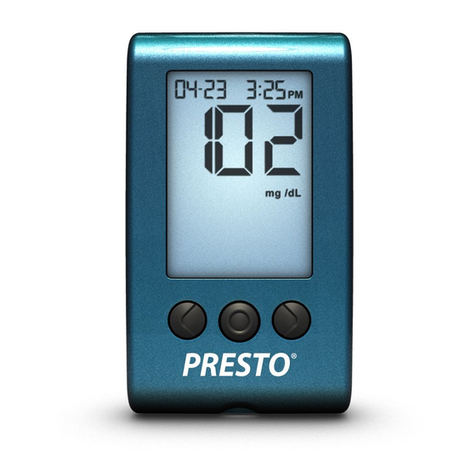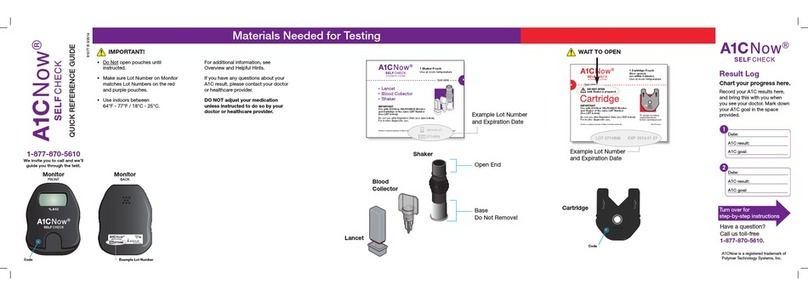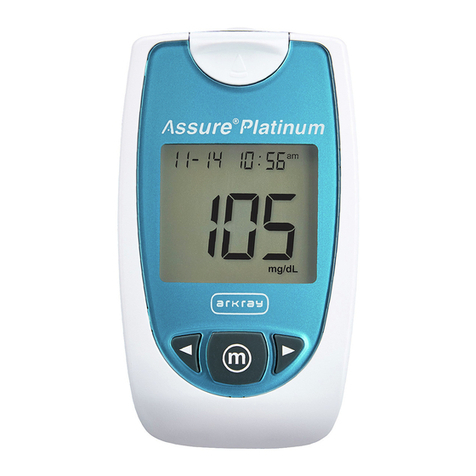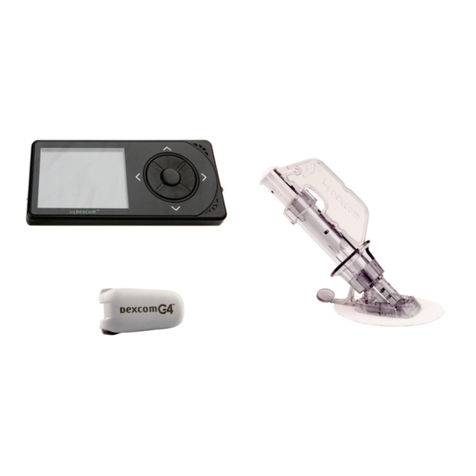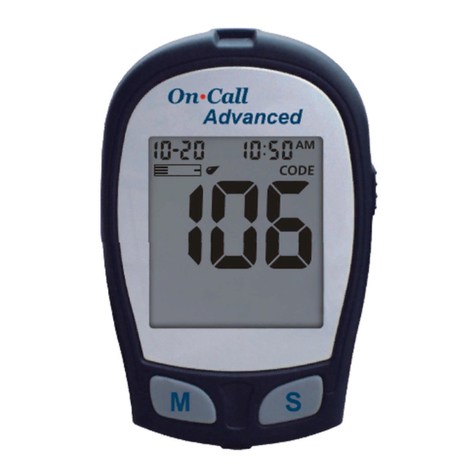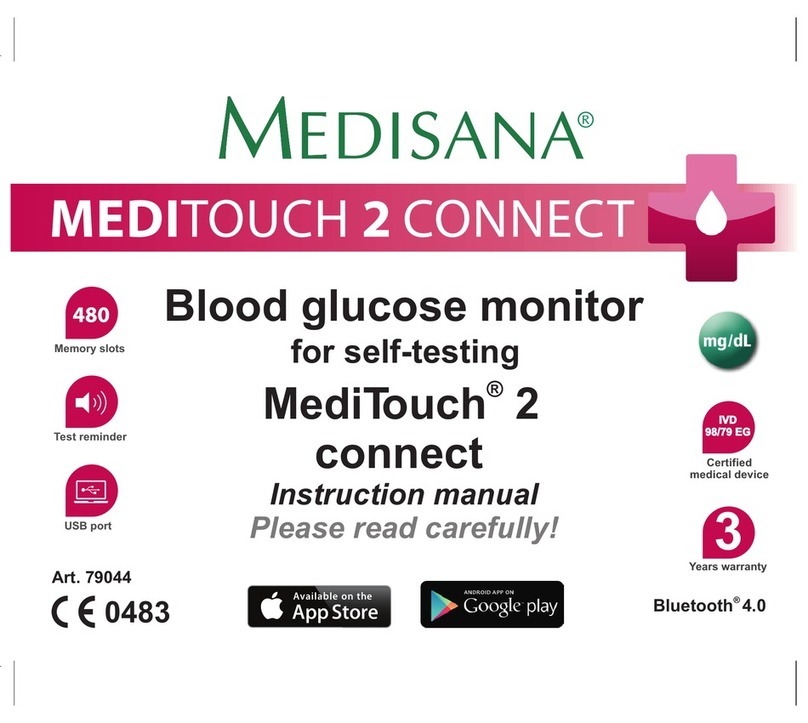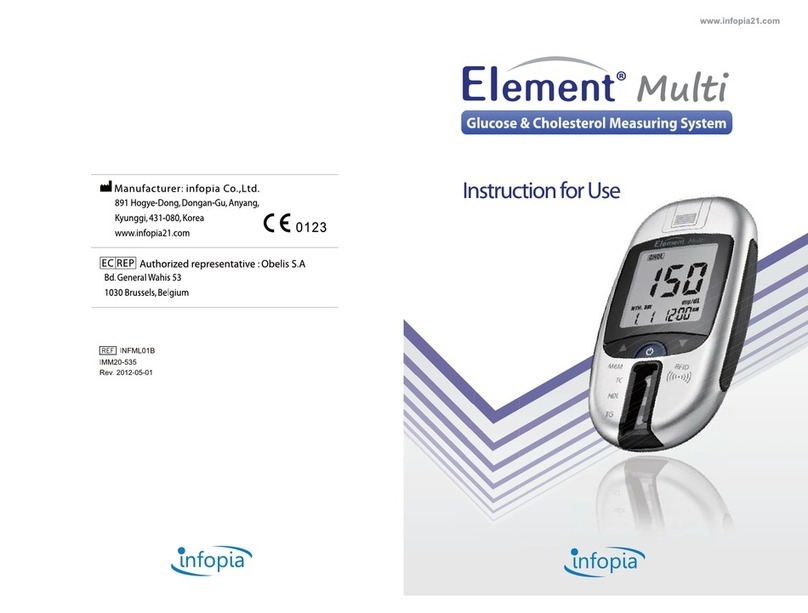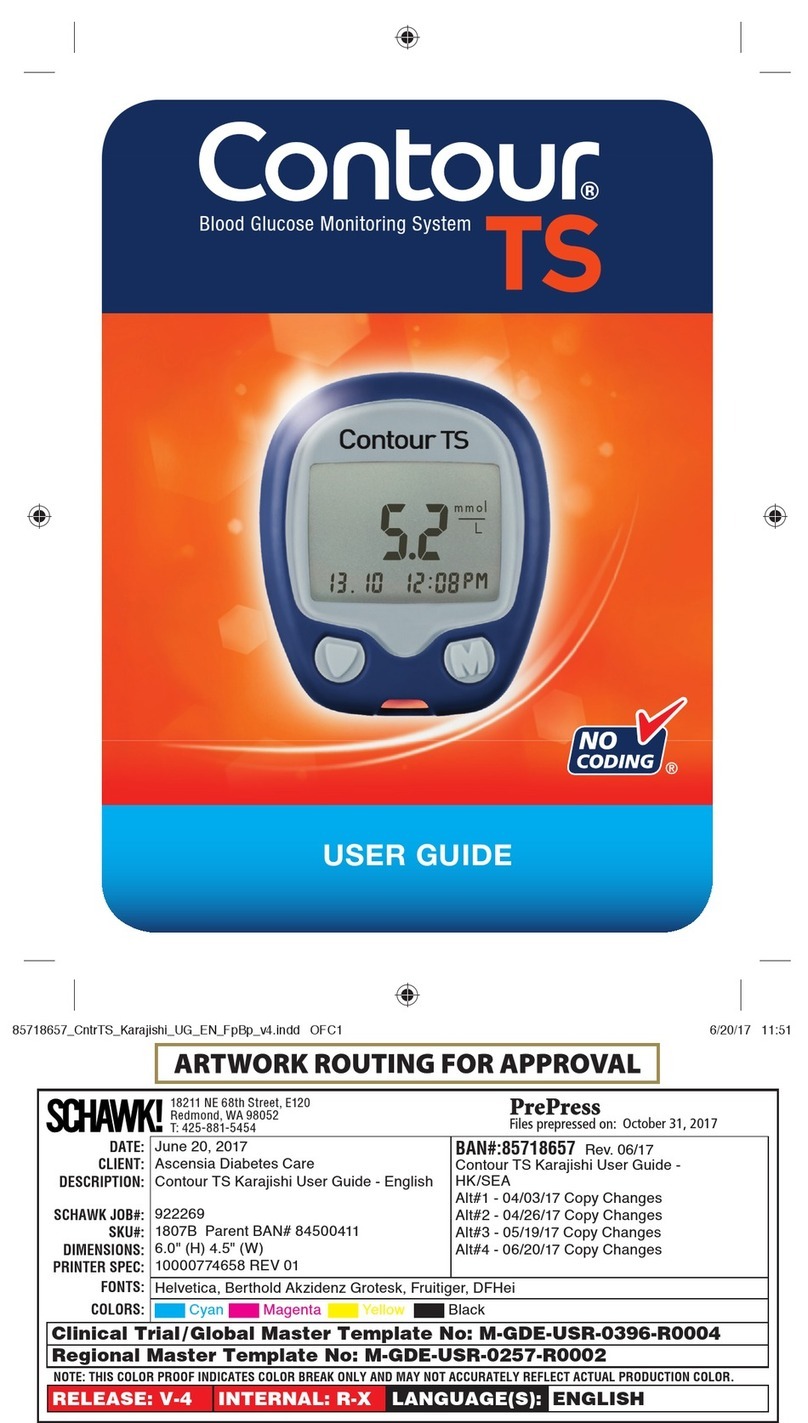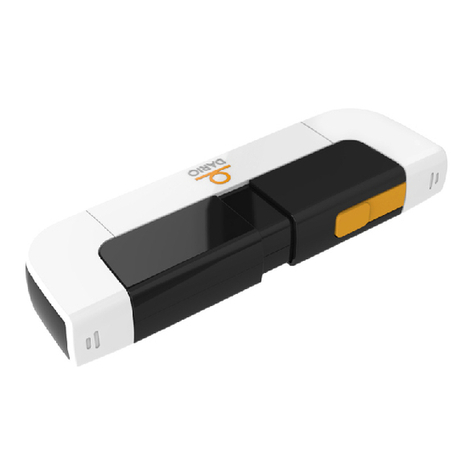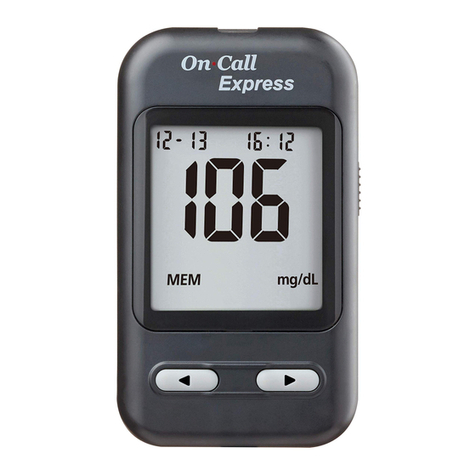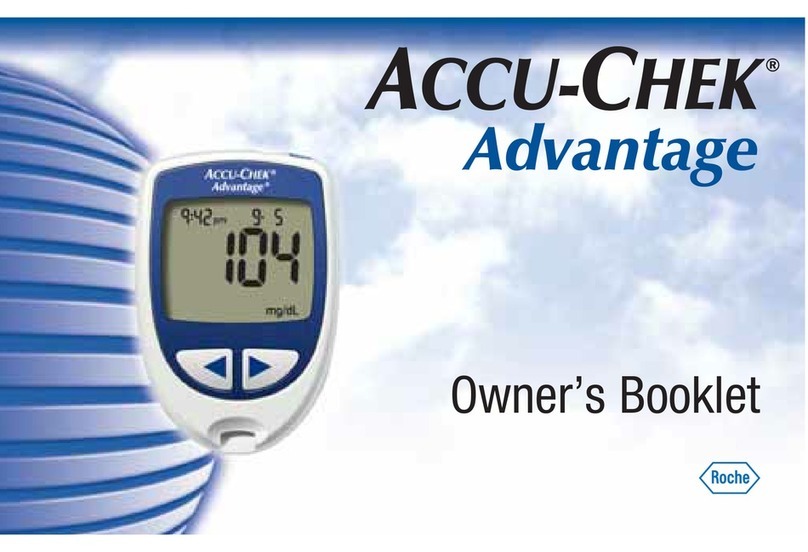5
1. Use this device ONLY for the intended use described in this manual.
2. Do NOT use accessories which are not specified by the manufacturer.
3. Do NOT use the device if it is not working properly or or if it is damaged.
4. Do NOT use the equipment in places where aerosol sprays are being
used, or where oxygen is being administered.
5. This device does NOT serve as a cure for any symptoms or diseases.
The data measured is for reference only.
6. Before using this device to test blood glucose, read all instructions
thoroughly and practice the test. Carry out all the quality control checks
as directed.
7. Keep the device and testing equipment away from young children.
Small items such as the battery cover, batteries, test strips, lancets and
vial caps are choking hazards.
8. Use of this device in a dry environment, especially if synthetic materials
are present (synthetic clothing, carpets etc.) may cause damaging
static discharges that may cause erroneous results.
9. Do NOT use this device in close proximity to sources of strong
electromagnetic radiation, as these may interfere with the accurate
operation.
KEEP THESE INSTRUCTIONS IN A SAFE PLACE


